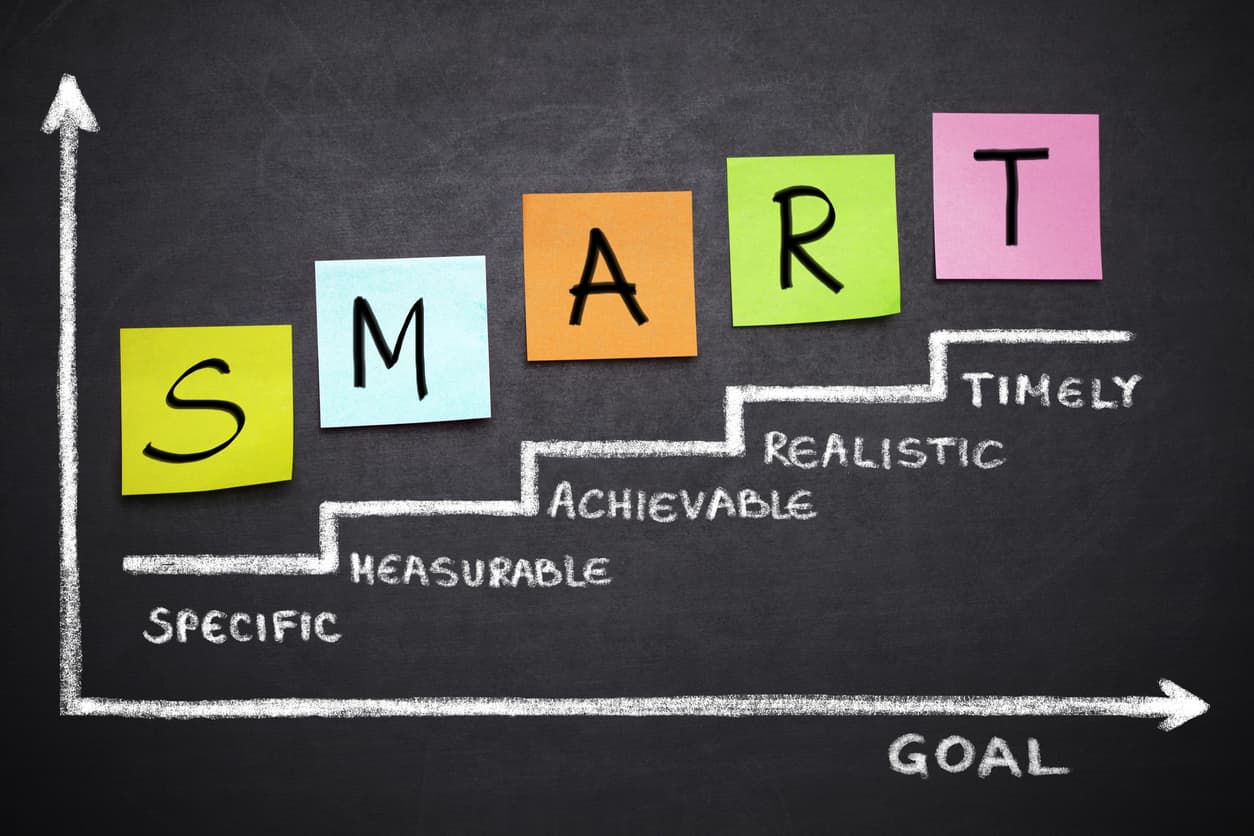Setting S.M.A.R.T. goals for success
Key takeaways:
- We set S.M.A.R.T. goals
- We create short-term and long-term goals
- We ensure learning goals are attainable and realistic
- We track progress and provide feedback
- We believe skills should be taught in an age-appropriate, systematic, and multi-sensory way
Our series on The Learning Lab’s core values continues. This time, we’re focusing on our “Action Oriented” core value. Children who struggle with learning differences like dyslexia or ADHD are fully capable of succeeding in school. They just need the right academic intervention for them. The Learning Lab takes action with these students by setting S.M.A.R.T. goals to meet each child’s specific learning needs.
A lot goes into goal setting. We talk about how we set goals for individual students, how we use them to help children gain skills, and how we measure progress in the short and long term. We take action with struggling learners because we understand struggling learners.
What does our “action-oriented” core value mean?
“Action-oriented” at The Learning Lab means taking incremental steps to help kids gain academic and executive function skills to overcome challenges posed by dyslexia, ADHD, or other learning differences. Children who struggle to read or focus in school often fall behind their peers. They might become discouraged or believe they can’t succeed.
Action-oriented goals provide an individualized plan – a framework. We use this framework to help children improve their reading, math, and writing skills, get organized, and learn executive functioning skills like time management, critical thinking, planning, and communication. By creating action-oriented steps, we set children on a path to success.
Identifying your child’s needs
If your child has fallen behind grade level in reading, math, or other subjects because of a learning difference, we can work with him or her to develop an individualized learning plan to meet his or her academic needs. We identify a child’s sore spots by using a number of scientifically based assessments, as well as careful observation. We identify the most effective and efficient intervention plan. We also establish a baseline based on objective data so that we know where to start. We measure how much growth is needed to catch up to peers and then set realistic and ambitious goals.
Being S.M.A.R.T. about your child’s goals
Goals are most useful when they’re S.M.A.R.T. The term has been used in the business world and by project managers for decades. It stands for “Specific, Measurable, Achievable, Relevant, Time.” S.M.A.R.T goals are clear and attainable. This concept can also be applied to instruction for students and is particularly helpful for those with learning differences.
It’s important to write out a goal plan, describe the plan to ensure the goals can be met, and measure progress through regular assessments and observations. This way, we can measure the rate of improvement and decide if we need to update or change the learning plan. For example, a report from the National Reading Panel suggests that students see a higher rate of improvement when reading instruction is provided and measured in an age-appropriate, systematic, and multi-sensory way.
Different types of goals
Goals come in all shapes and sizes. Some are small and quickly attainable, while others are more ambitious. The duration of goals might be different, too. It’s important to have long-term and short-term goals.
We set long-term goals first, which provide an overall direction and what we hope to accomplish with our learning plan. Short-term goals are the tools we use to reach long-term goals. It breaks goals down into smaller, more manageable pieces.
Here’s an example of how it works: Long-term goal = Writing a paragraph with 4-5 complete sentences, correct spelling, and correct grammar.
Short-term goals to achieve that long term goal:
- Learn and apply the right punctuation
- Learn to construct complete sentences with subjects and predicates (correct grammar)
- Learn to complete a paragraph using a topic sentence and add supporting details
By completing the short-term steps one by one, the student will learn how to construct a paragraph.
Developing attainable goals
Setting goals that are too ambitious can easily lead to frustration and anxiety. While you do want to challenge your child to achieve more, going too far too fast can be discouraging. If your child fails to achieve overly ambitious goals, they can end up feeling hopeless. This can lead to withdrawal and behavior problems. Older students with learning differences are at higher risk of dropping out of school when they feel they cannot make progress on overly lofty goals.
Track progress and provide feedback
It’s important to track the progress of short-term goals on a regular basis, whether weekly or bi-weekly. We can make adjustments to goals based on student progress. We also make sure to provide feedback to students and parents. Students who see their own progress will start to feel encouraged and will want to keep improving.
The Learning Lab’s programs
The Learning Lab offers a range of programs to fit the needs of struggling learners. Our action-oriented core value propels students to go farther with clear, reachable, S.M.A.R.T. goals. Our programs include:
- One-on-one instruction
- Small group instruction
- Homeschool support programs
- Cognitive training programs
- Homework management
We create a Learning Profile for each child to determine the right interventions and programs. We grew up as misunderstood learners who didn’t know how to “try harder.” That experience has allowed us to understand struggling learners and create incremental, achievable goals to propel them to academic success.
Academic software
Oftentimes, we incorporate scientifically-based reading, writing, and math software into our programs, which are designed specifically for children who learn differently. These programs are targeted to focus on common issues facing children with dyslexia, dyscalculia, and ADHD. They help them learn critical cognitive skills, including:
- Phonemic awareness
- Phonics
- Reading comprehension
- Reading fluency
- Grammar
- Semantics & mechanics
- Vocabulary
- Morphology (recognition, understanding, and the use of word parts)
- Math fluency and automaticity
- Visualizing abstract and concrete math skills
Our academic software helps set your learner up for success with brain-based technology. It takes a brain-based approach for kids who need to catch up on academic skills. It helps take the stress away from school by supporting kids’ learning preferences and abilities.
I3 Lab
Our I3 Lab offers a customized experience for each child. I3 stands for Intensive, Individualized Instruction. We craft individualized plans for each child using many time-tested, evidence-based curricula.
Our programs include:
- Barton Reading and Spelling System©
- DreamBox Math©
- Fast ForWord®
- Foundation in SoundsTM
- Multi-sensory Math Remediation Programs
- Multi-Sensory Writing Instruction
- Reading Assistant PlusTM
- Wilson Just Words®
- Winston Grammar®
- Visualizing and Verbalizing Multi-Sensory Language-Based Programming®
- TouchMath©
- Institute for Excellence in Writing (IEW)
- Seeing Stars®
In the I3 Lab, we teach kids the way they learn. We tailor a plan to fit your child’s strengths and learning style, whether he/she is a visual, auditory, or tactile learner. We offer one-on-one and small group instruction 3:1. Using a personalized intervention plan, we can help close academic gaps and build confidence, so your child can catch up with their peers and succeed academically.
Getting help for your child
If your child struggles academically because of learning differences such as dyslexia or ADHD, it’s important to get help as early as possible. The Learning Lab in Ft. Lauderdale and Davie offer support for children and teens who need help in reading, writing, and math. Our goal is to prepare your child for a lifetime of learning while helping him/her close academic gaps. Contact us today for more information.





